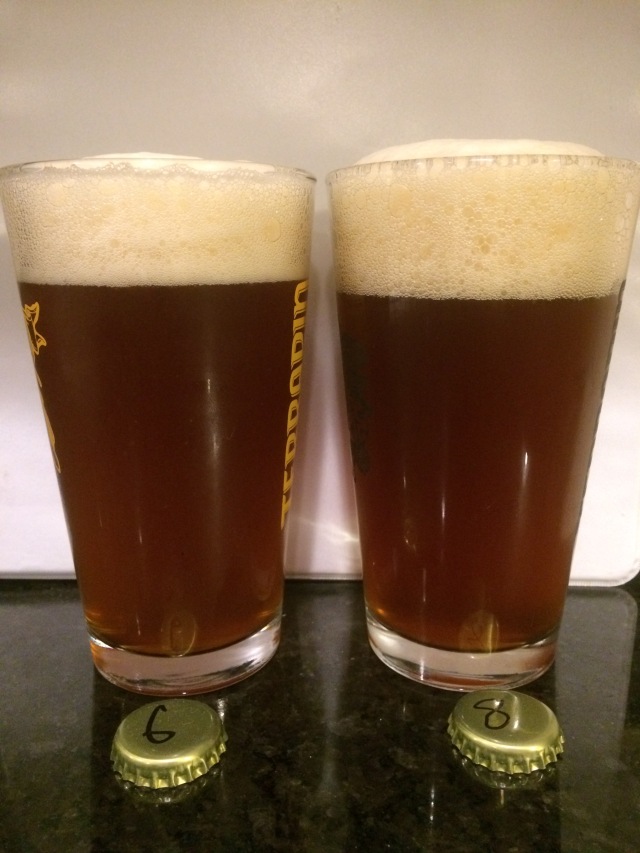This post is one in a series of making small adjustments to a single recipe in order to improve it, learn more about the impact each ingredient has on the finished product, and the art of recipe creation. The rest of the comparison tastings in this series can be found here.
Recently, I’ve ended up comparing beers of varying OG and ABV due to overshooting my gravity with Iteration 7 and the changes made after Iteration 5 to help ensure consistency. However, versions 6 and 8 of this red IPA recipe are identical in grain bill, OG, and FG. This is one of the truer comparisons I’ve been able to make regarding analyzing the variable I changed between recipes–in this case, hops.
Recap
The recipes for each beer are as follows:
Iteration 6
|
Iteration 8
|
Appearance
Both beers poured with an excellent head and had great retention, lacing the glass with foam as the beer level lowered. Both beers were also red in color, although Iteration 8 was the slightest bit darker that Iteration 6.

Aroma
Iteration 6 had an aroma of citrus and cherry along with some floral notes. The biggest impression I got from this, though, was a big ripe fruit aroma.
Iteration 8 smelled of plum, cherry, and citrus. The aroma was slightly richer in this beer, although it is a fresher beer so that might be the reason for that difference.
Flavor
Iteration 6 had a catty flavor, along with some citrus, plum, and sweet, red cherry. Iteration 8 tasted of red plum, Bing cherry, and orange zest.
Final Thoughts
Overall, I’m surprised that the hop aroma in Iteration 6 is still as present as it is. The other beers in this series had almost fully lost their hop aroma at two months old. That said, Iteration 8 tasted “fuller.” It was more rounded out and multi-dimensional in both flavor and aroma. While I think some of that has to do with age, I think a majority of it has to do with the different and more multilayered hopping regimen of Iteration 8, especially considering that these beers have the exact same grist, OG, and ABV. Additionally, the hop profile of Iteration 8 has much more citrus flavor than Iteration 6 and lacks the Simcoe cattiness that just didn’t meld well with the other flavors in this recipe.
Truthfully, these are both really good beers, but I’m pleasantly surprised to see this large of a difference between them. It serves as proof to me that this recipe has continued to improve, even after it crossed that line of being only okay into being a good beer. With this kind of improvement between two solid beers, there’s no sense now in settling for “good.”
